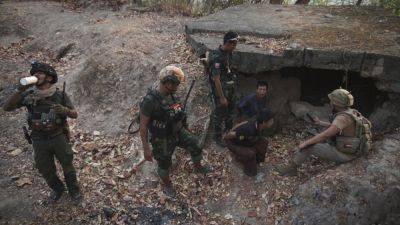Myanmar’s widening war headed for junta’s heartland
Even before the end of a dry season that has dramatically upended the military balance in Myanmar, the broad and profoundly sobering contours of conflict over the remainder of 2024 and into 2025 are already taking shape.
Recent months have seen large swathes of the nation’s borderlands fall under the control of powerful ethnic minority armies amid cascading defeats suffered by State Administration Council (SAC) military forces.
But the war in the coming rainy season and beyond will almost certainly be waged at increasing intensity in the country’s populous ethnic Bamar heartland and will be a very different fight.
Short of a political implosion of the embattled regime in Naypyidaw – a conceivable but still unlikely scenario – the already discernable shift of major hostilities toward the center of national power promises a far less organized and more brutally destructive conflict than anything seen to date with inevitably dire humanitarian consequences.
A worst-case scenario could involve a descent into a wave of killing and population displacement not seen in Southeast Asia since the Indochina wars of the 1970s.
The scale of the army’s recent battlefield losses and its impact on morale offers some ground for hope that the coming phase of the war might, if nasty and brutish, at least be short and that a “strategic offensive” announced by the opposition National Unity Government (NUG) last December will push a weakened SAC regime toward collapse or break the military’s cohesion.
It remains to be seen how far opposition-led predictions of regime collapse are justified but the omens are at best mixed.
Certainly, the three distinct campaigns launched by ethnic resistance organizations (EROs) in the dry season ending in May







